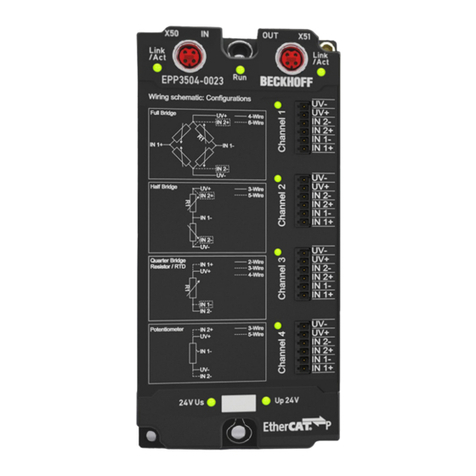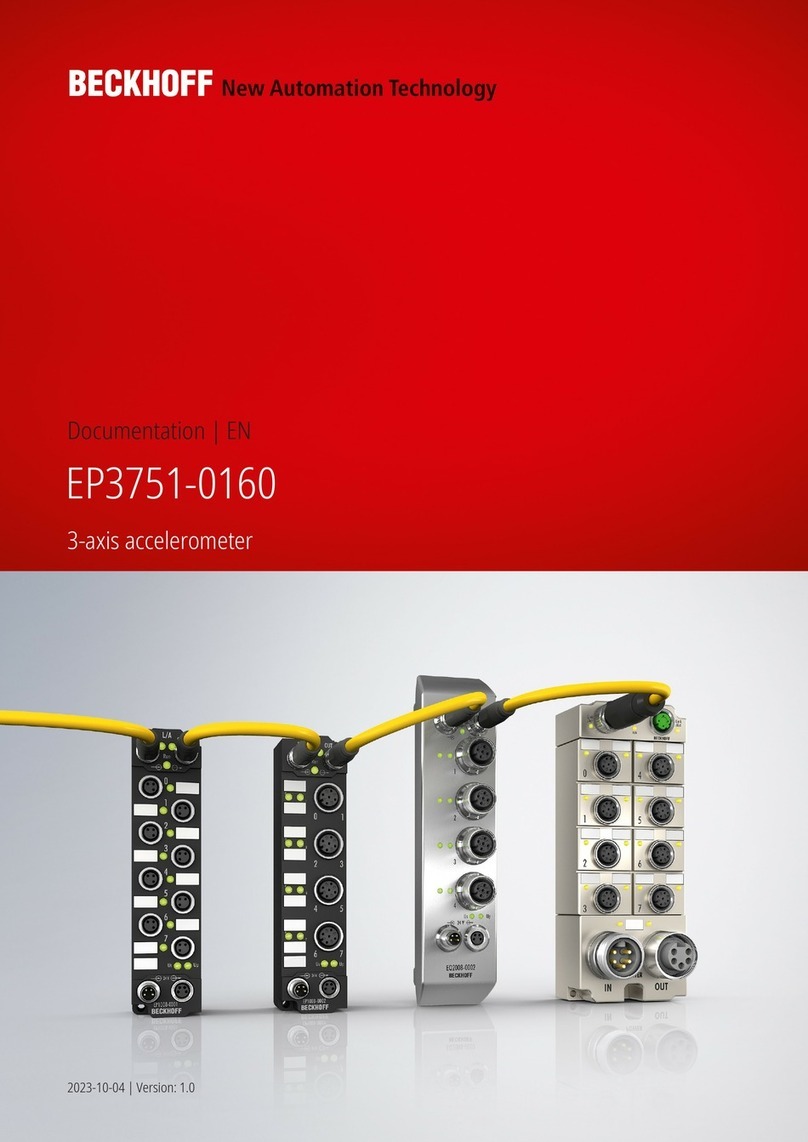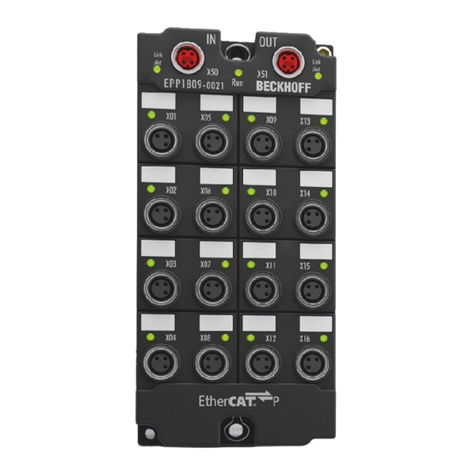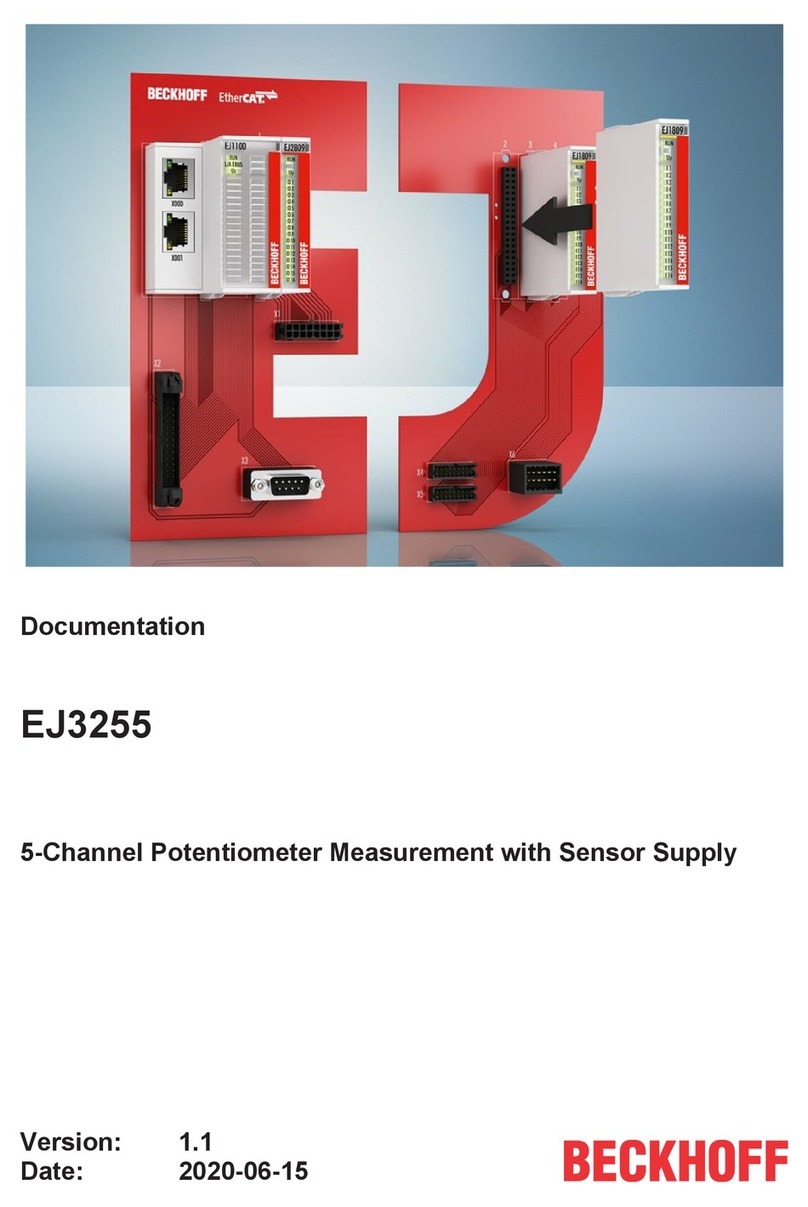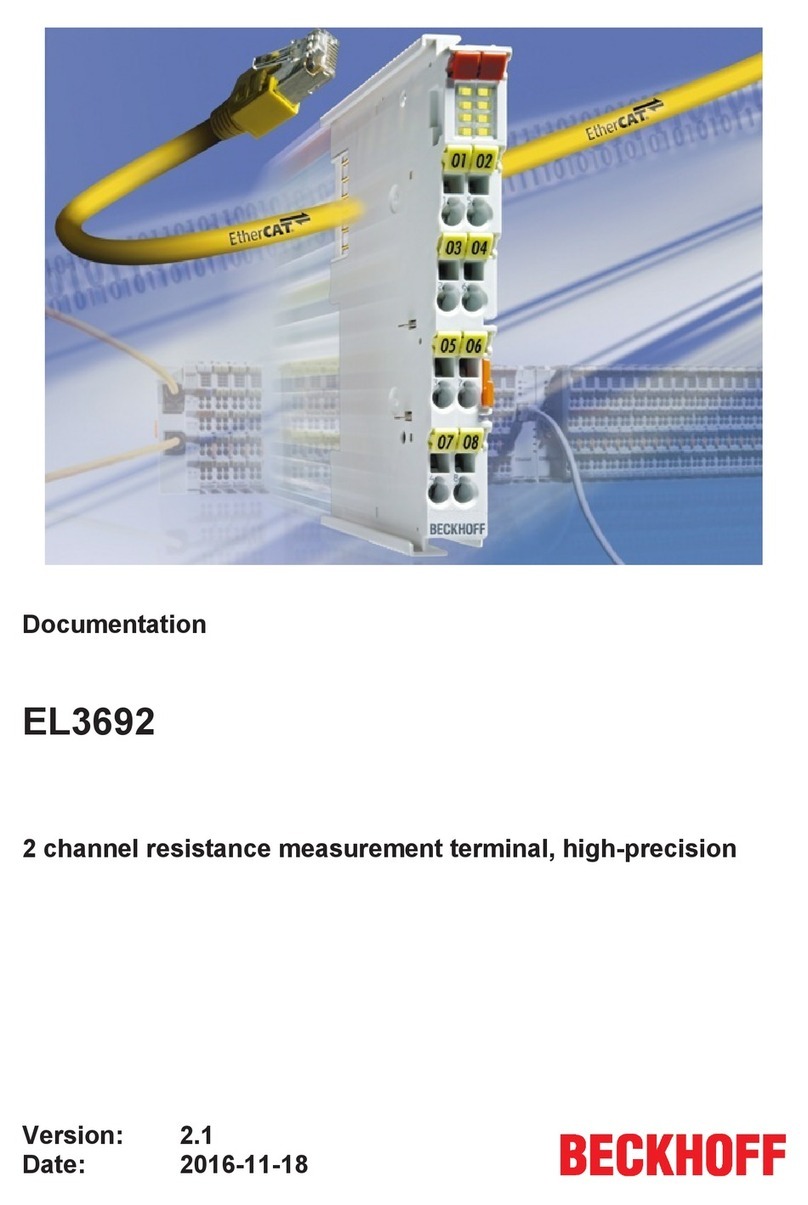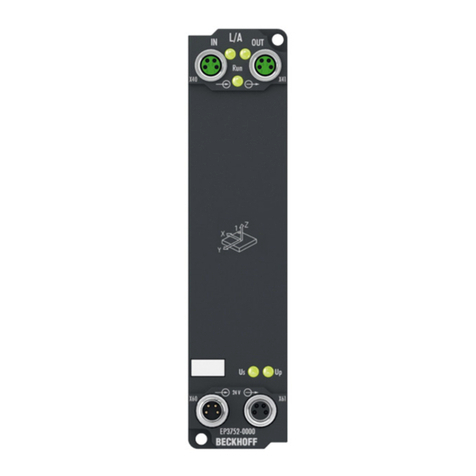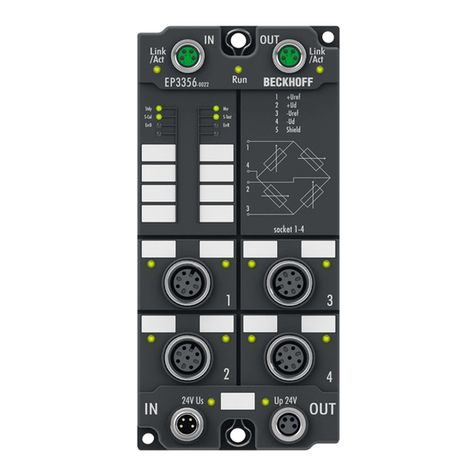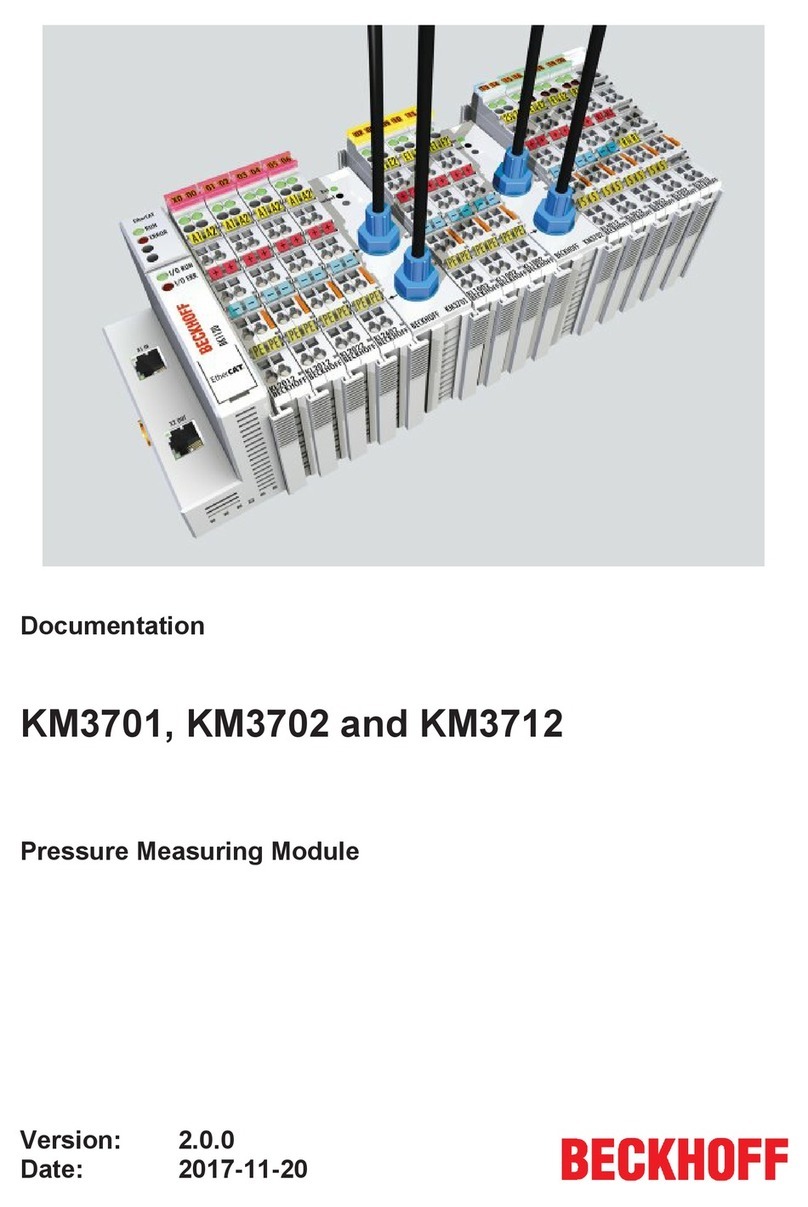
Table of contents
EL36814 Version: 3.0
5.2.5 OFFLINE configuration creation....................................................................................... 88
5.2.6 ONLINE configuration creation ........................................................................................ 93
5.2.7 EtherCAT subscriber configuration ................................................................................ 101
5.2.8 Import/Export of EtherCAT devices with SCI and XTI.................................................... 110
5.3 General Commissioning Instructions for an EtherCAT Slave .......................................................117
5.4 Notices on analog specifications...................................................................................................125
5.4.1 Full scale value (FSV), output end value ....................................................................... 125
5.4.2 Measurement error/measurement deviation/measurement uncertainty, output uncertainty
.......................................................................................................................................126
5.4.3 Temperature coefficient tK [ppm/K]................................................................................ 127
5.4.4 Long-term use ................................................................................................................ 128
5.4.5 Ground reference: single-ended/differential typification.................................................129
5.4.6 Common-mode voltage and reference ground (based on differential inputs) ................ 134
5.4.7 Dielectric strength .......................................................................................................... 135
5.4.8 Temporal aspects of analog/digital or digital/analog conversion.................................... 136
5.4.9 Explanation of the term GND/Ground ............................................................................ 139
5.4.10 Sampling type: Simultaneous vs. multiplexed................................................................141
5.5 Basic function principles/functional description.............................................................................144
5.5.1 Measuring ranges and output ........................................................................................ 144
5.5.2 Selecting a measuring range ........................................................................................ 144
5.5.3 Autorange....................................................................................................................... 145
5.5.4 Filter ...............................................................................................................................145
5.5.5 Frequency ......................................................................................................................145
5.5.6 Presentation ...................................................................................................................146
5.5.7 Zero Compensation Interval...........................................................................................146
5.5.8 Calibration ......................................................................................................................146
5.6 Process data .................................................................................................................................147
5.6.1 Process image ............................................................................................................... 147
5.6.2 Control, Status, Settings-Word....................................................................................... 149
5.6.3 PDO Assignment............................................................................................................ 150
5.6.4 Calculation of process data............................................................................................151
5.6.5 Determining (user) gain values ...................................................................................... 153
5.7 Object description and parameterization.......................................................................................154
5.7.1 Restore object ................................................................................................................ 155
5.7.2 Configuration data..........................................................................................................155
5.7.3 Configuration data (vendor-specific) .............................................................................. 157
5.7.4 Input data ....................................................................................................................... 158
5.7.5 Output data .................................................................................................................... 159
5.7.6 Information and diagnostic data ..................................................................................... 159
5.7.7 Standard objects (0x1000-0x1FFF) ............................................................................... 159
5.8 Sample Program ...........................................................................................................................164
6 Error handling and diagnostics ...........................................................................................................168
7 Appendix................................................................................................................................................169
7.1 Accessories...................................................................................................................................169
7.2 EtherCAT AL Status Codes ..........................................................................................................170
7.3 Firmware compatibility ..................................................................................................................171

